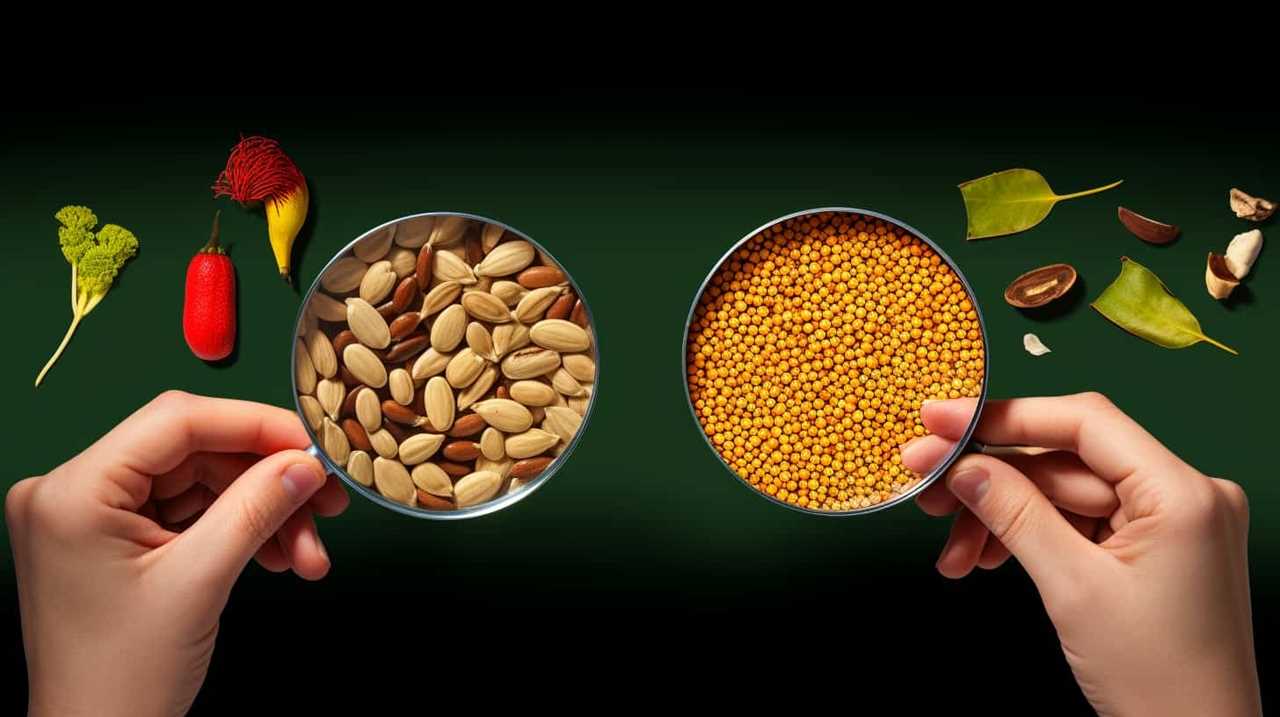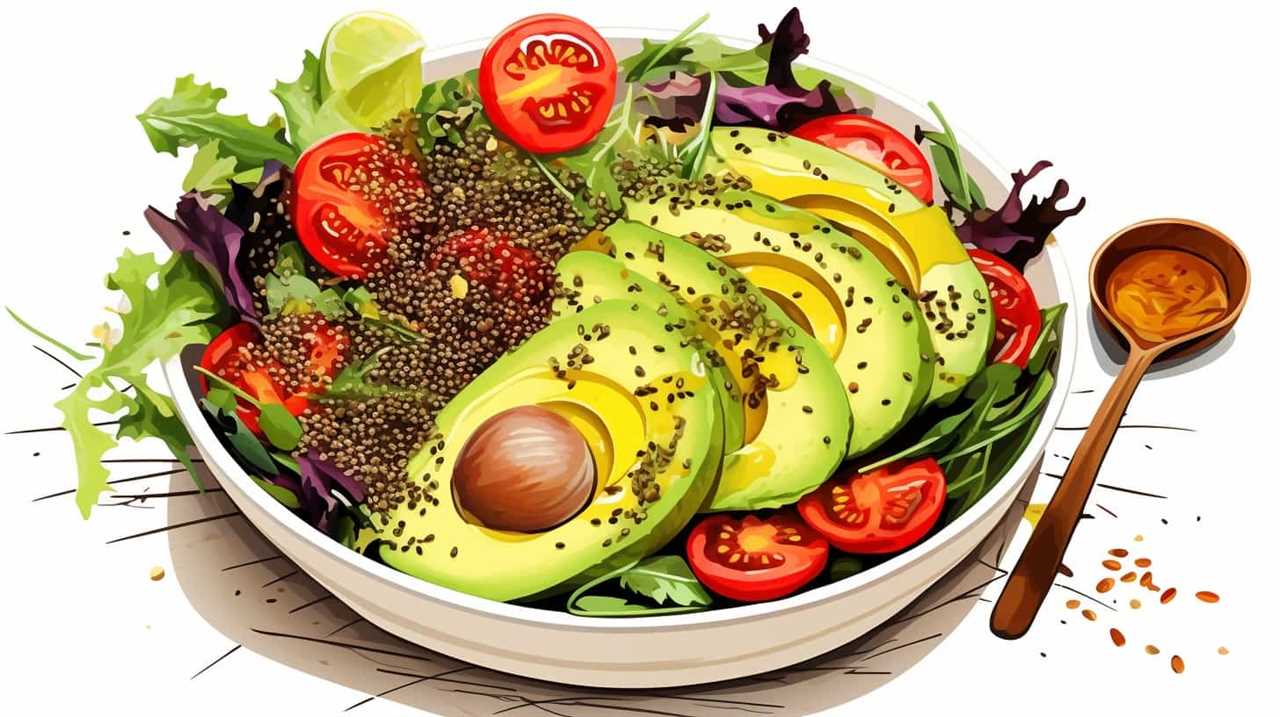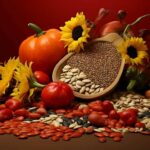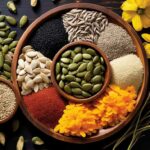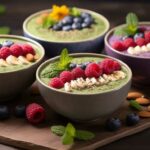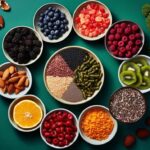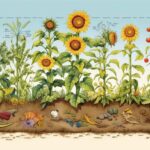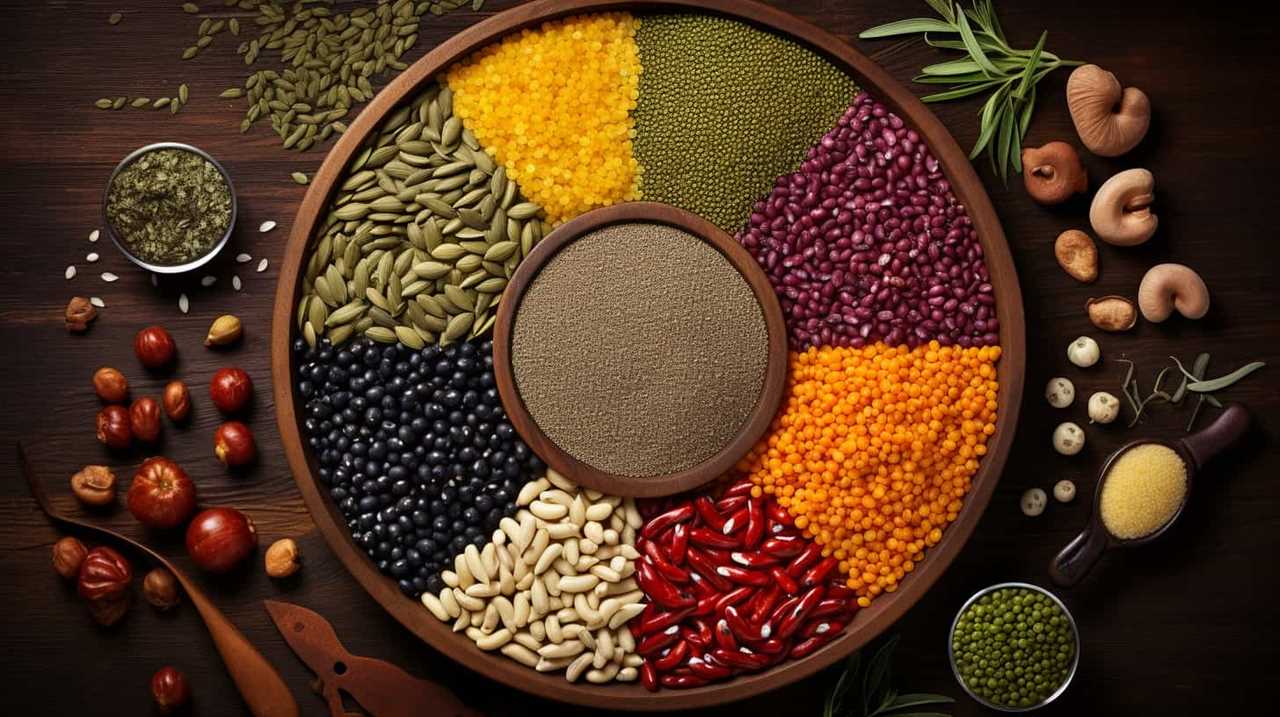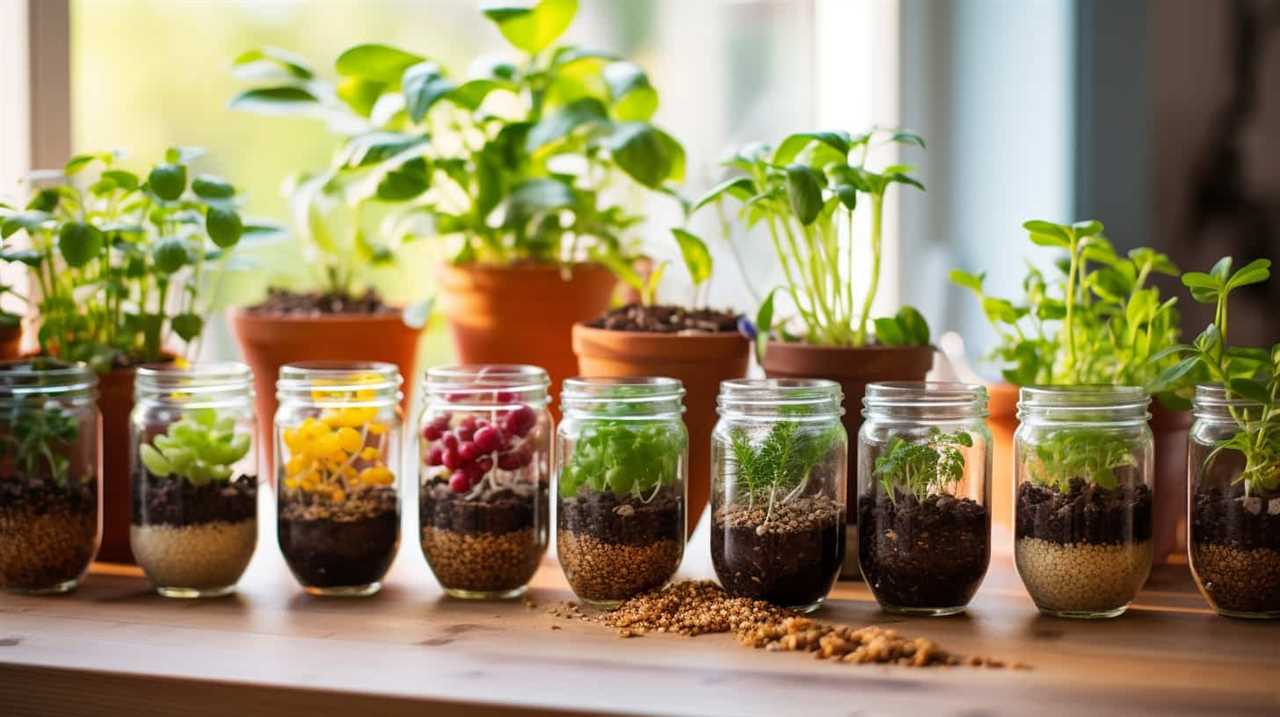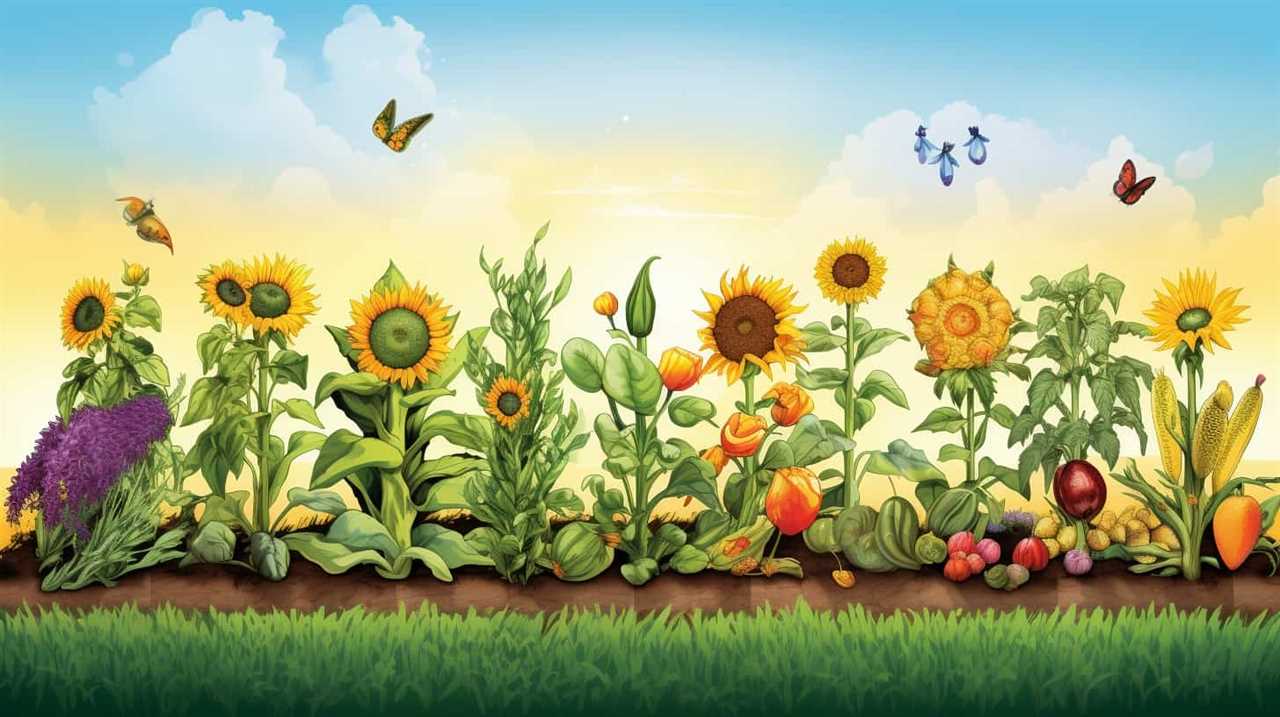Are you ready to start your large-scale chia cultivation journey? We offer 14 essential tips that will help improve your understanding and boost your chances of success.
From soil preparation to marketing strategies, we’ll guide you through every step of the process.
So grab your notebook and get ready to unleash your inner chia farmer. Let’s embark on this journey together and cultivate a thriving chia empire.
Key Takeaways
- Conduct soil testing and apply organic matter to enrich the soil
- Use efficient irrigation techniques and prioritize water sources with low levels of contaminants
- Establish a planting schedule and stagger planting for continuous harvest
- Implement weed and pest control strategies and regularly inspect chia fields for pests
Soil Preparation
To achieve optimal results in large-scale chia production, we begin by preparing the soil with diligent care and attention. Soil testing is a crucial step in this process. By analyzing the soil composition, we can identify any deficiencies or excesses of nutrients that may hinder chia growth.
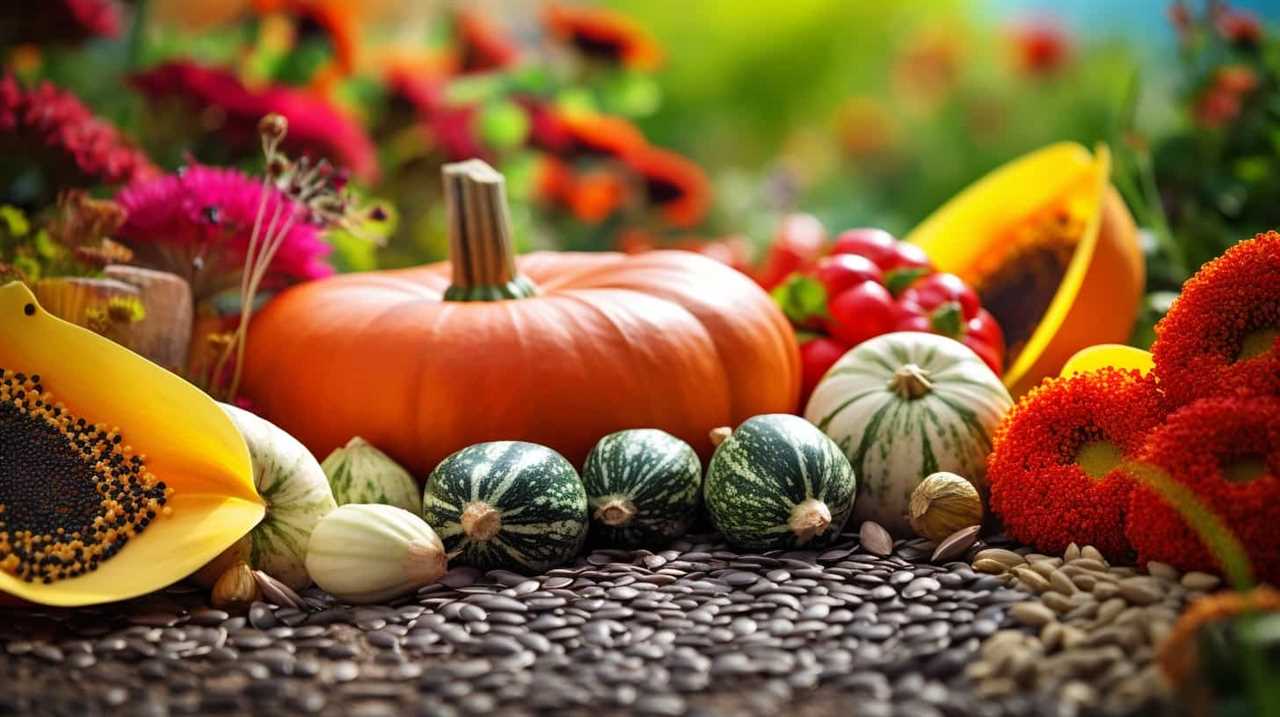
Through soil testing, we can determine the appropriate nutrient management plan to ensure a balanced and fertile soil environment. Nutrient management involves supplying the necessary nutrients in the right quantities and at the right time to support chia plants’ growth and development. This includes the application of organic matter, such as compost or manure, and the use of fertilizers tailored to the specific nutrient requirements of chia.
Seed Selection
How do we choose the best seeds for large-scale chia production? Seed selection is a crucial step in ensuring a successful chia farming operation. It involves careful seed sourcing and understanding effective germination techniques. When sourcing seeds, it is important to choose a reputable supplier that provides high-quality seeds with a high germination rate. The table below outlines key factors to consider when selecting chia seeds:
| Factors to Consider | Description |
|---|---|
| Seed Quality | Look for seeds that are clean, free from disease or pests, and have a high germination rate. |
| Genetic Diversity | Choose seeds from different genetic backgrounds to promote plant resilience and adaptability. |
| Seed Size | Opt for seeds that are uniform in size, as this ensures consistent germination and plant growth. |
Irrigation System Setup
When it comes to setting up an irrigation system for large-scale chia production, there are several crucial points to consider.
Firstly, choosing the right water source is essential to ensure the quality and availability of water.
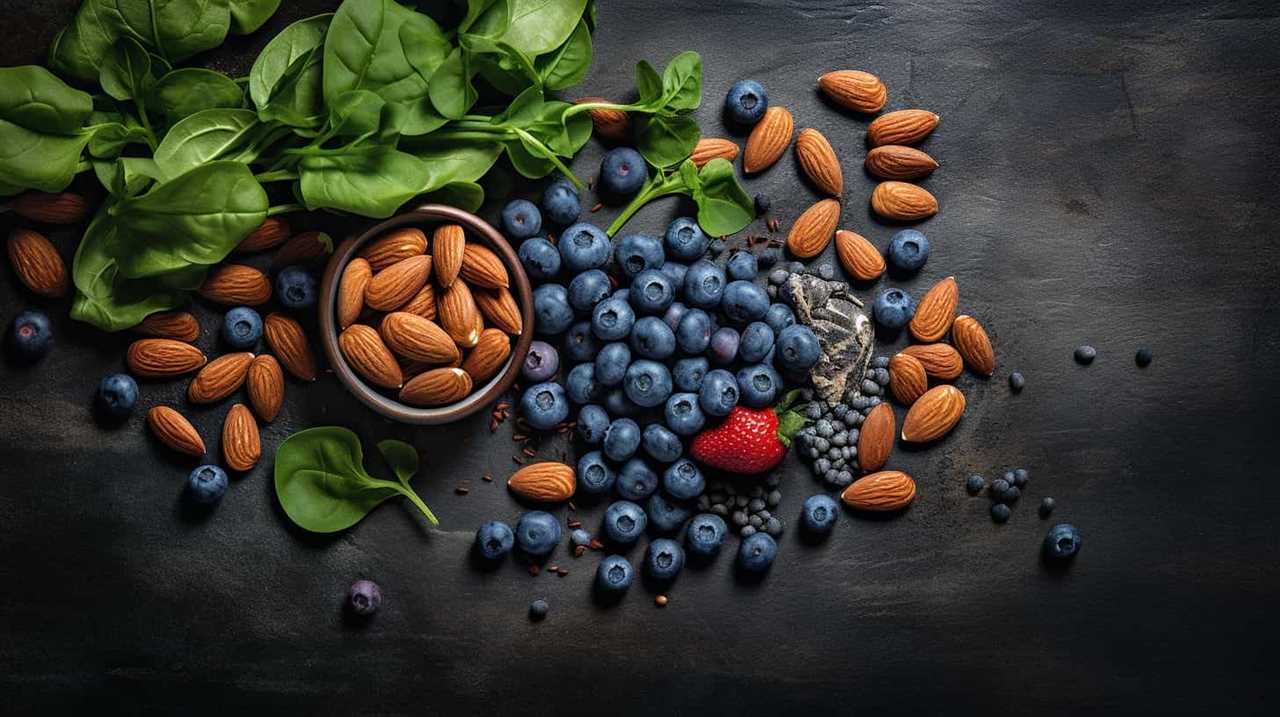
Secondly, implementing efficient watering techniques, such as drip irrigation or sprinklers, can optimize water usage and minimize waste.
Lastly, regular maintenance and troubleshooting of the irrigation system are necessary to ensure its proper functioning and prevent any potential issues.
Water Source Selection
As we plan for large-scale chia production, it’s essential to carefully select a water source and set up an efficient irrigation system. The quality of water used in cultivation directly affects the health and productivity of chia plants. Here are some key considerations when choosing a water source:
- Water quality: Prioritize water sources with low levels of contaminants such as heavy metals and pesticides. Regular testing ensures water quality standards are met.
- Availability: Select a water source that provides a consistent and reliable supply throughout the growing season, reducing the risk of crop stress due to water scarcity.
- Sustainability: Opt for water sources that align with sustainable practices, such as rainwater harvesting or utilizing recycled water, minimizing the strain on freshwater resources.
- Filtration systems: Implement effective filtration systems to remove impurities and maintain optimal water quality for chia cultivation.
- Compatibility: Ensure the water source is suitable for chia production by considering factors such as pH levels, mineral content, and salinity.
Proper water source selection and the use of filtration systems are crucial steps in establishing a robust irrigation system for successful large-scale chia cultivation.

Efficient Watering Techniques
We found that utilizing an automated sprinkler system proved to be an efficient watering technique for large-scale chia production. Automated irrigation systems provide several advantages, including water conservation and increased efficiency.
These systems are designed to deliver water directly to the plants’ root zones, minimizing water wastage and ensuring optimal hydration. By utilizing timers and sensors, automated sprinklers can be programmed to water the chia crops at specific times and in precise amounts, based on the plant’s needs. This not only eliminates the guesswork but also reduces the risk of overwatering or underwatering.
Moreover, automated irrigation systems can be integrated with weather sensors to adjust watering schedules based on real-time weather conditions, further optimizing water usage.
Maintenance and Troubleshooting
To ensure the proper functioning of the irrigation system setup, our team regularly conducts maintenance and troubleshooting tasks. Here are some maintenance tips and troubleshooting techniques that we employ to keep the system running smoothly:
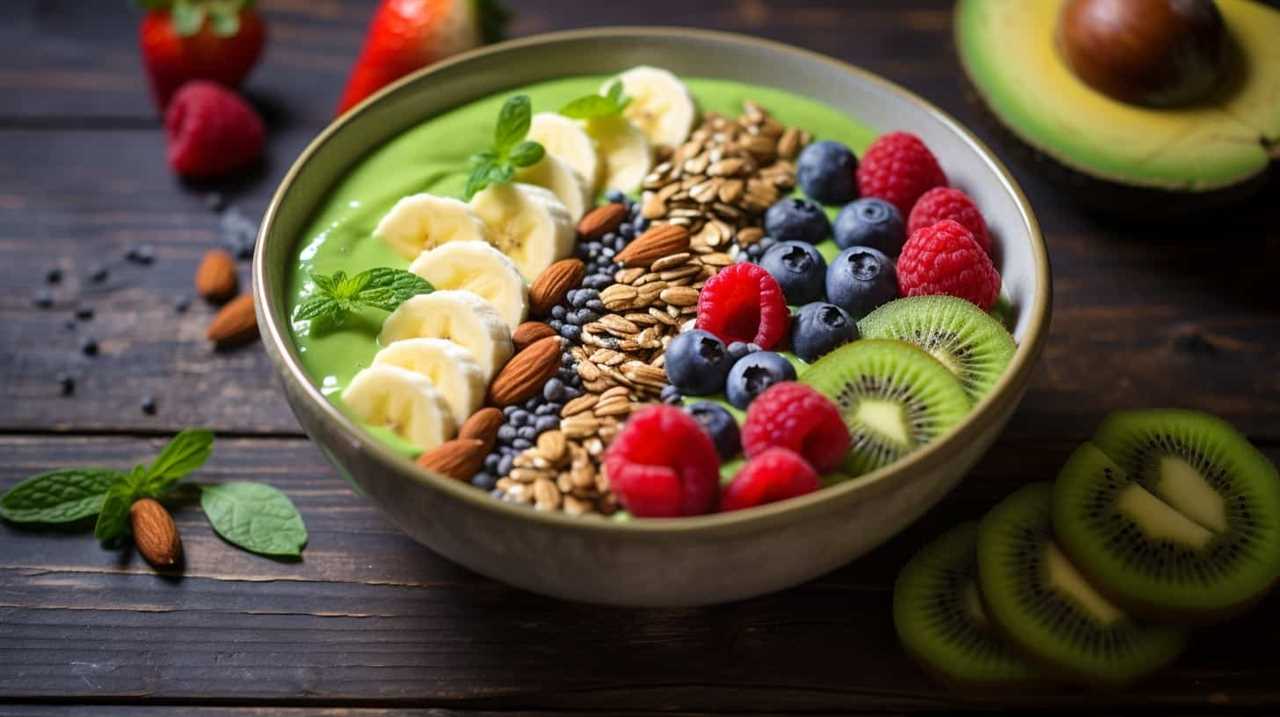
- Regular inspections: We perform routine inspections to identify any potential issues such as leaks, clogs, or damaged components. This helps us address problems before they escalate.
- Cleaning and unclogging: We clean the filters and remove any debris that might obstruct the flow of water. Regular cleaning prevents clogs and ensures efficient water distribution.
- Calibration: We regularly calibrate the irrigation system to ensure accurate water delivery. This involves checking the water pressure, adjusting sprinkler heads, and fine-tuning the system’s settings.
- Testing and monitoring: We conduct regular tests to check the system’s performance, including water distribution and coverage. By monitoring the system closely, we can identify any deviations and make necessary adjustments promptly.
- Upgrading and replacing: We keep an eye on technological advancements and upgrade or replace outdated components when needed. This helps us optimize the system’s efficiency and overall performance.
Planting Schedule
When it comes to large-scale chia production, having an optimal planting schedule is crucial. By understanding the best times to plant, taking into account seasonal considerations, and utilizing succession planting techniques, growers can maximize their yield and overall productivity.
This discussion will delve into these points, providing valuable insights and strategies for effective chia cultivation.
Optimal Planting Times
During the process of large-scale chia production, it’s crucial to carefully consider the timing for planting in order to maximize yield and ensure optimal growth. When determining the optimal planting times for chia, there are several best practices and climate factors to take into account:
- Soil temperature: Chia seeds should be sown when the soil temperature is consistently above 60°F (15°C) for optimal germination and establishment.
- Frost risk: Chia plants are sensitive to frost, so it’s important to avoid planting too early in regions prone to late spring frosts.
- Rainfall patterns: Chia requires sufficient moisture during its growing period, so planting should be timed to coincide with periods of regular rainfall or irrigation availability.
- Daylight hours: Chia is a short-day plant, meaning it thrives in regions with shorter daylight hours. Planting during the appropriate season can ensure the optimum amount of sunlight exposure.
- Pest and disease pressure: Consider the timing of pest and disease outbreaks in your region to avoid planting during peak infestation periods.
Considering these factors will help ensure successful chia production.
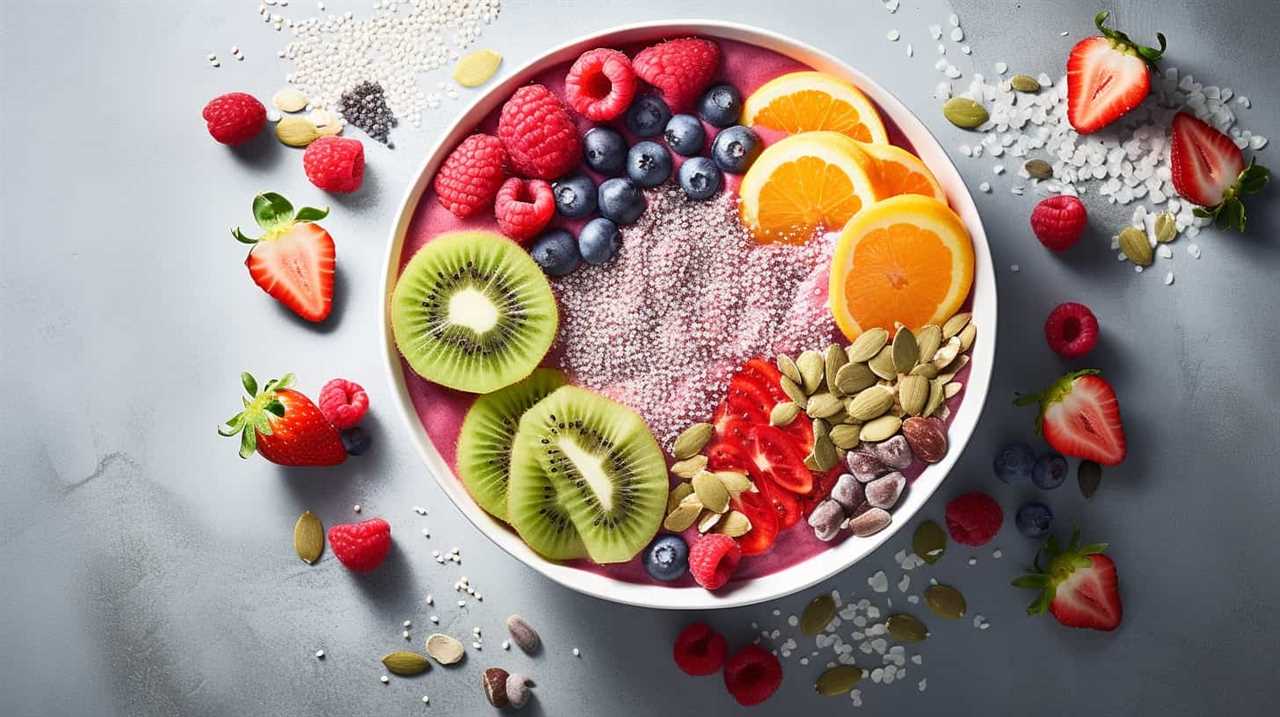
Now, let’s dive into the seasonal planting considerations.
Seasonal Planting Considerations
As we plan our large-scale chia production, we carefully consider the seasonal planting schedule. Succession planting benefits us by staggering the planting of crops, ensuring a continuous harvest throughout the growing season. By planting new batches of chia every few weeks, we can maximize productivity and maintain a steady supply of fresh produce.
Additionally, crop rotation advantages play a crucial role in our planting schedule. Rotating chia with other crops helps prevent the buildup of pests and diseases, as different plants have varying nutrient requirements. This practice also enhances soil fertility and reduces the need for chemical fertilizers or pesticides.
Succession Planting Techniques
To optimize our large-scale chia production, we employ a systematic planting schedule that utilizes regular intervals for planting new batches of chia crops. Succession planting, also known as staggered planting, offers several benefits and presents its own set of challenges.
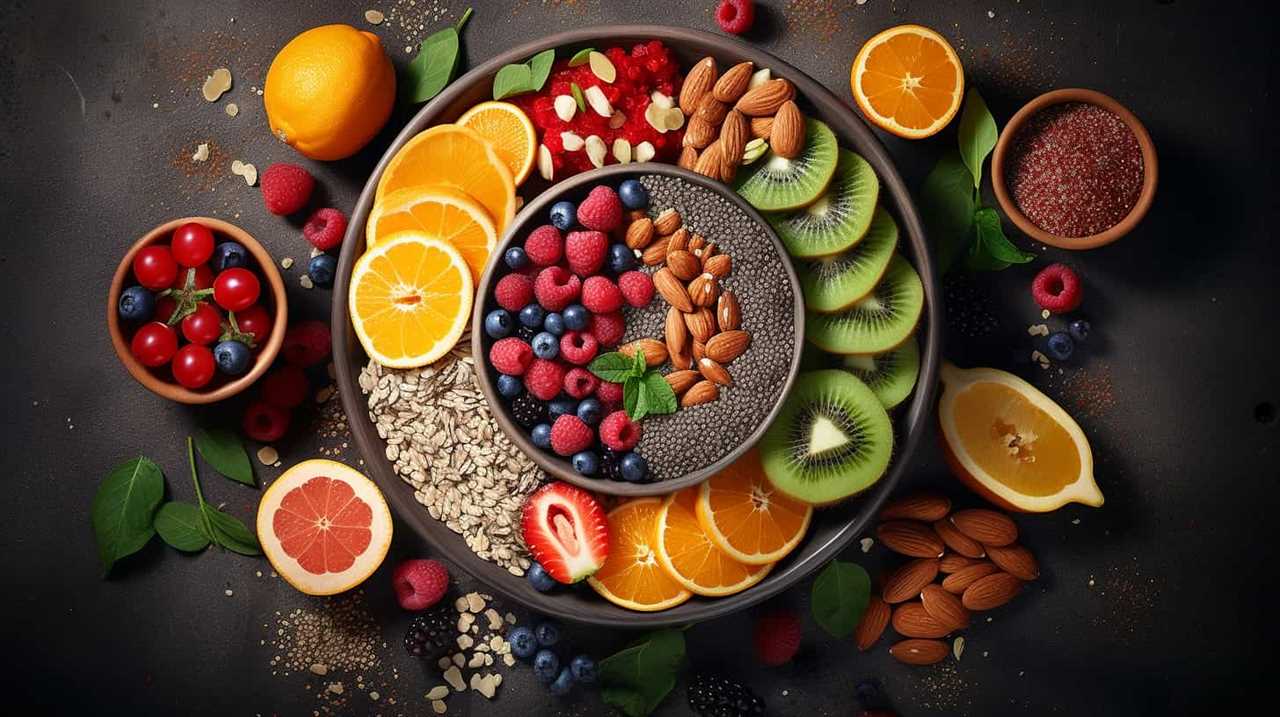
Benefits of Succession Planting:
- Continuous harvest: By planting in stages, we ensure a steady supply of fresh chia crops throughout the growing season.
- Maximizes space utilization: Succession planting allows us to make the most efficient use of available space, ensuring that every inch of our fields is productive.
- Mitigates risk: If a particular batch of chia crops fails due to unfavorable conditions, we’ve other batches at different stages of growth to rely on.
- Reduces pest and disease pressure: By planting at regular intervals, we minimize the risk of pests and diseases affecting our entire chia crop.
- Extends the harvest window: Succession planting extends the harvesting period, providing us with a longer window to gather the mature chia seeds.
However, implementing succession planting techniques also poses its challenges. We need to carefully manage planting schedules, monitor growth stages, and ensure proper crop rotation to maintain soil health and prevent nutrient depletion.
Now that we’ve discussed the benefits and challenges of succession planting, let’s move on to the next crucial aspect of large-scale chia production: weed control methods.
Weed Control Methods
For effective weed control in large-scale chia production, we rely on the application of herbicides. However, we understand that many growers are seeking alternative methods that align with organic practices and weed prevention techniques.

Organic weed control involves implementing strategies that suppress weed growth without the use of synthetic chemicals. This can be achieved through cultural practices such as mulching, crop rotation, and hand weeding.
Mulching with organic materials like straw or wood chips can inhibit weed germination and growth by acting as a physical barrier. Crop rotation helps disrupt weed life cycles and reduces the buildup of weed populations. Additionally, regular hand weeding can be labor-intensive but effective in managing weed infestations.
By incorporating these organic weed control methods, growers can maintain a weed-free environment while adhering to sustainable and environmentally friendly practices.
Moving forward, let’s now discuss the next crucial aspect of chia production: fertilization techniques.
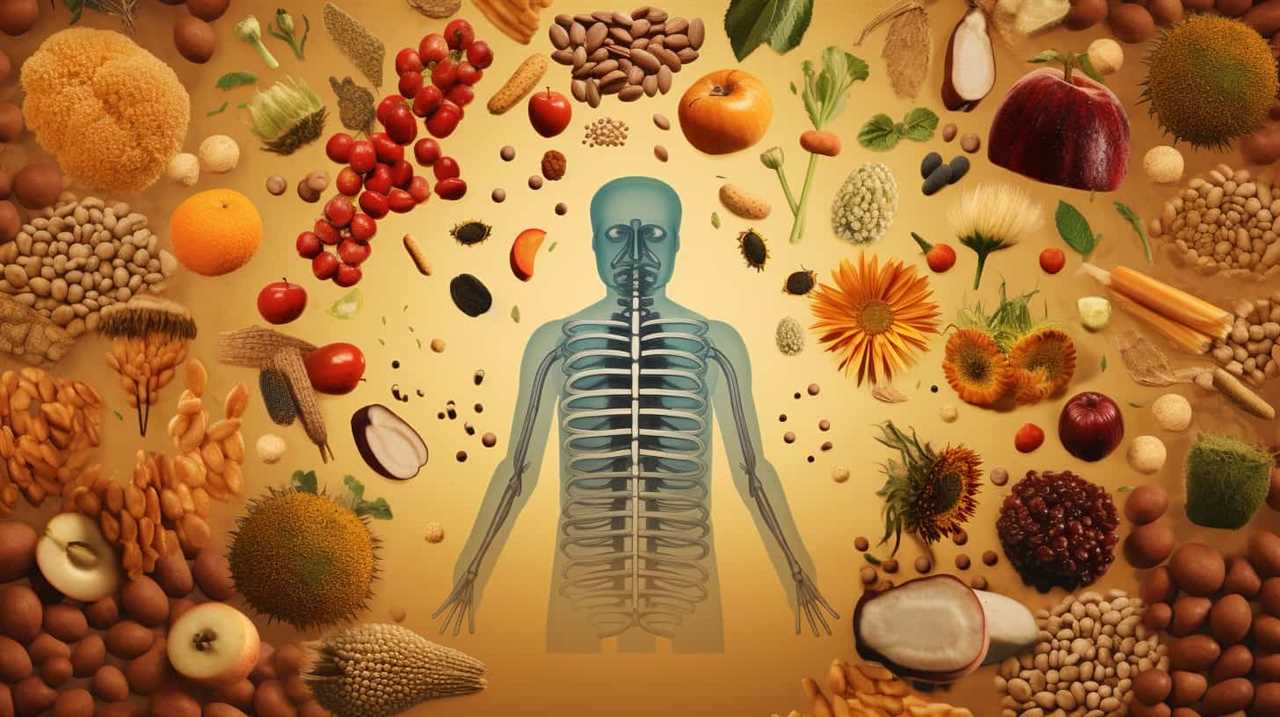
Fertilization Techniques
We implement nutrient-rich fertilization techniques to promote optimal growth and yield in large-scale chia production. Effective fertilizer application and nutrient management are crucial for ensuring healthy plants and maximizing productivity. Here are five key strategies we employ:
- Soil analysis: We conduct thorough soil testing to determine the nutrient content and pH levels, allowing us to make informed fertilizer decisions.
- Balanced nutrient application: We carefully calculate the required amounts of nitrogen, phosphorus, and potassium, ensuring a balanced nutrient supply for the chia plants.
- Timing and method: We apply fertilizers at specific growth stages and employ techniques like banding or side-dressing to ensure efficient nutrient uptake.
- Organic options: We prioritize the use of organic fertilizers to enhance soil health, minimize environmental impact, and promote sustainable farming practices.
- Monitoring and adjustment: We regularly monitor plant health and nutrient levels, making adjustments to the fertilizer program as needed.
By implementing these fertilization techniques, we create an environment conducive to optimal chia growth and yield.
Transitioning into the subsequent section about pest management strategies, we ensure the well-being of our crops in every aspect of large-scale chia production.
Pest Management Strategies
In our large-scale chia production, we employ effective pest management strategies to protect our crops and ensure their successful growth and yield. Pest control plays a crucial role in maintaining the health and productivity of our chia plants. We follow an integrated pest management approach, which combines various tactics to minimize pest damage while minimizing reliance on chemical pesticides.
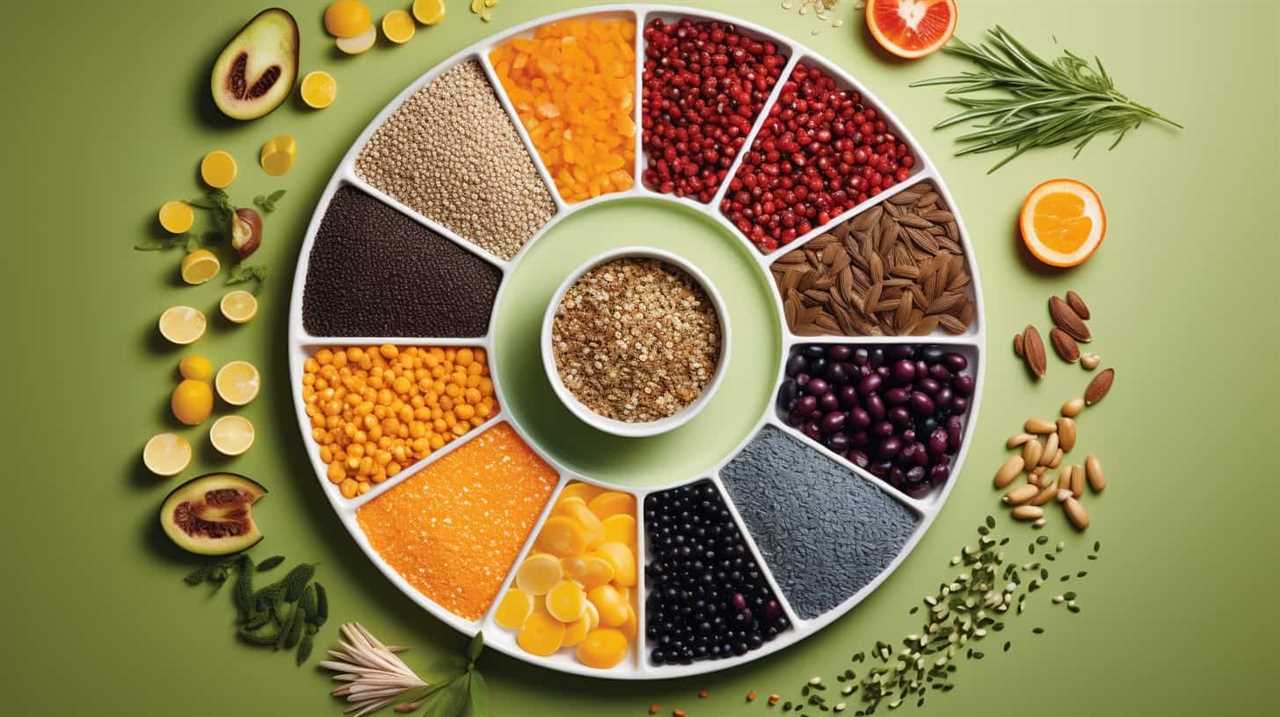
To implement integrated pest management, we utilize a combination of cultural, biological, and chemical control methods. These strategies are aimed at preventing pests from causing significant harm to our chia crops. Here is a table highlighting the different pest management strategies we employ:
| Pest Management Strategies | Description |
|---|---|
| Cultural Control | Crop rotation, proper sanitation practices, and maintaining optimal plant health to reduce pest populations and prevent infestations. |
| Biological Control | Introducing beneficial insects, such as ladybugs and parasitic wasps, to naturally control pest populations. |
| Chemical Control | As a last resort, targeted and judicious use of pesticides that are safe for the environment and non-toxic to humans. |
| Monitoring and Scouting | Regular monitoring and scouting of the chia fields to detect early signs of pest infestations and take appropriate actions. |
| Record Keeping | Keeping detailed records of pest outbreaks, control measures implemented, and their effectiveness to inform future pest management decisions. |
Harvesting Procedures
When it comes to large-scale chia production, it’s crucial to understand the optimal harvest timing as well as the proper handling and storage techniques. These factors play a significant role in maintaining the quality and maximizing the yield of the chia crop.
Optimal Harvest Timing
Achieving optimal harvest timing is crucial for maximizing chia production on a large scale. To ensure the best results, consider the following tips for optimal storage and post-harvest handling:
- Monitor seed color: Harvest when the seeds turn from green to brown, indicating maturity.
- Check seed moisture content: Aim for a moisture content of around 8-10% to prevent mold formation during storage.
- Use proper harvesting equipment: Utilize machinery that minimizes seed damage and loss during harvest.
- Implement efficient drying methods: Dry the harvested chia seeds promptly to prevent spoilage and maintain quality.
- Adopt effective storage techniques: Store the dried chia seeds in a cool, dry, and well-ventilated area to maintain their nutritional value and prevent deterioration.
Handling and Storage Techniques
To ensure optimal handling and storage of harvested chia seeds on a large scale, we must carefully consider the following techniques. Proper post-harvest handling is crucial to maintain seed quality and maximize seed germination rates. After harvesting, it is important to remove any debris or impurities from the seeds. This can be done using a specialized cleaning machine. Once cleaned, the seeds should be dried to a moisture content of around 8-10% to prevent mold growth. This can be achieved by using a drying machine or by spreading the seeds in a thin layer and allowing them to air dry. After drying, the seeds should be stored in a cool and dry place, preferably in airtight containers to prevent moisture absorption. Regular monitoring and periodic quality checks should be conducted to ensure the seeds remain viable for future use.
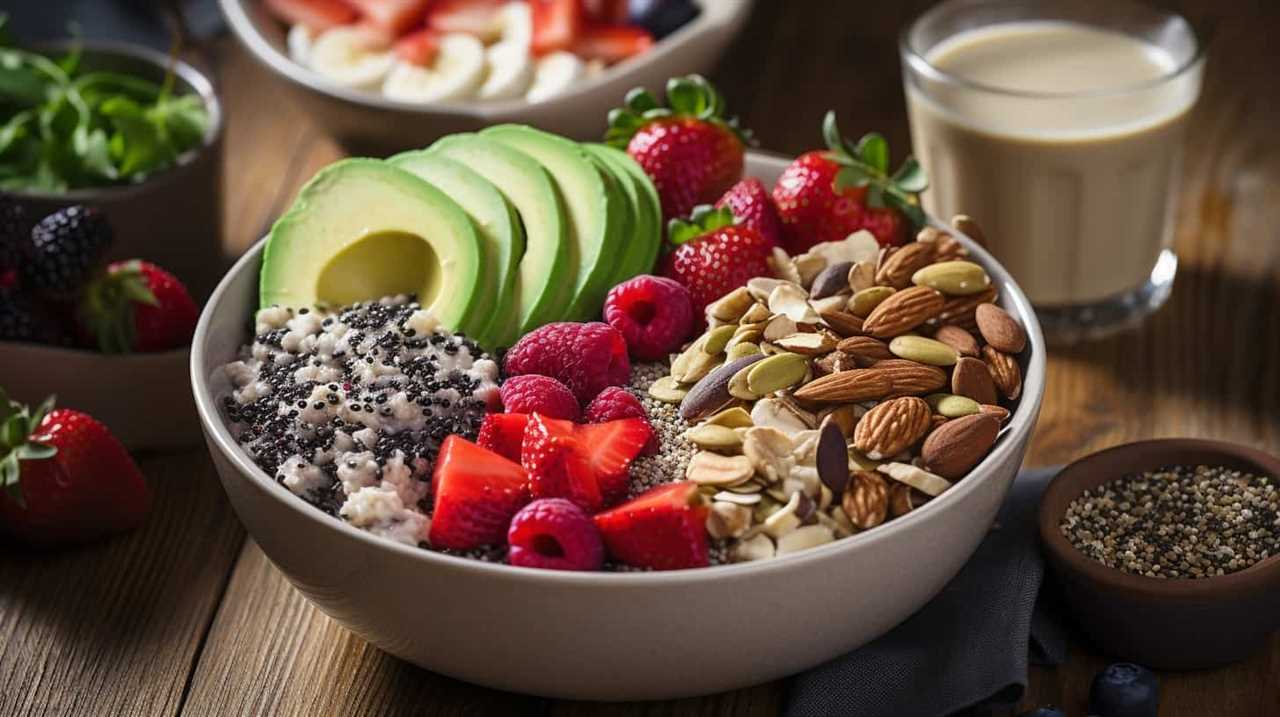
| Handling and Storage Techniques | |
|---|---|
| 1. Cleaning | Remove debris and impurities from the seeds using a cleaning machine. |
| 2. Drying | Dry the seeds to a moisture content of 8-10% using a drying machine or air drying. |
| 3. Storage | Store the dried seeds in a cool and dry place, preferably in airtight containers. |
Drying and Threshing Process
We employ a mechanical method to dry and thresh chia seeds on a large scale. This allows for efficient processing and ensures consistent quality.
Here are some essential techniques and tips for the drying and threshing process:
- Use controlled temperature and airflow to remove moisture from the seeds effectively.
- Implement moisture management strategies to prevent mold and spoilage.
- Regularly monitor the moisture content to ensure optimal drying conditions.
- Utilize specialized equipment such as drying tunnels or conveyor systems for large-scale operations.
- Implement automation technologies to streamline the process and increase productivity.
By employing these drying techniques and moisture management strategies, we can ensure that the chia seeds are thoroughly dried and ready for the next stage of processing.
In the subsequent section, we’ll discuss the crucial steps involved in cleaning and grading the seeds, which further enhances their quality and market value.
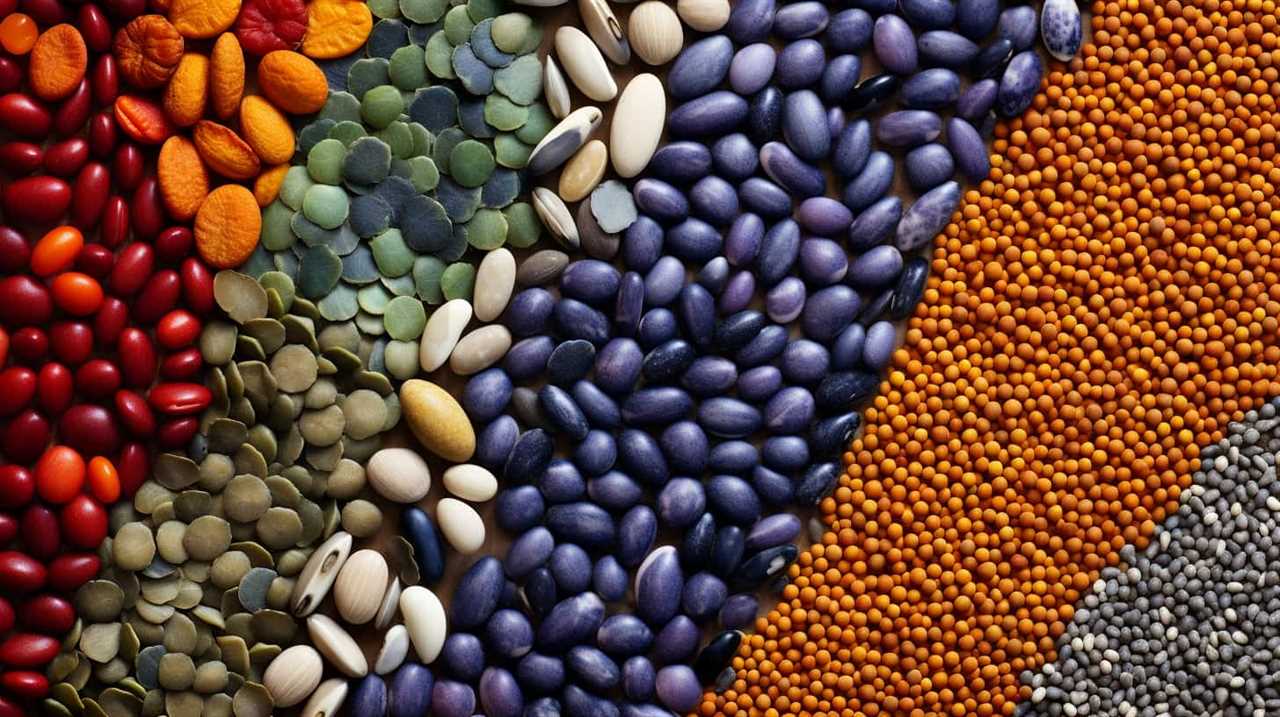
Cleaning and Grading the Seeds
Regularly, we clean and grade the chia seeds to ensure their quality and market value. Implementing effective cleaning techniques and adhering to strict grading standards is crucial in large-scale chia production. By removing impurities and separating the seeds based on their size and quality, we can offer a premium product to our customers.
To achieve this, we employ various cleaning techniques such as air aspiration, sieving, and magnetic separation. These methods help eliminate foreign materials, including dust, dirt, and small debris, ensuring that only clean and pure chia seeds remain.
Once the cleaning process is complete, we proceed to grade the seeds based on specific standards. This involves sorting the seeds into different categories based on their size, color, and overall appearance. By maintaining consistent grading standards, we can provide our customers with chia seeds that meet their requirements and expectations.
Now that the seeds are cleaned and graded, we can move on to the next step: packaging and storage considerations.
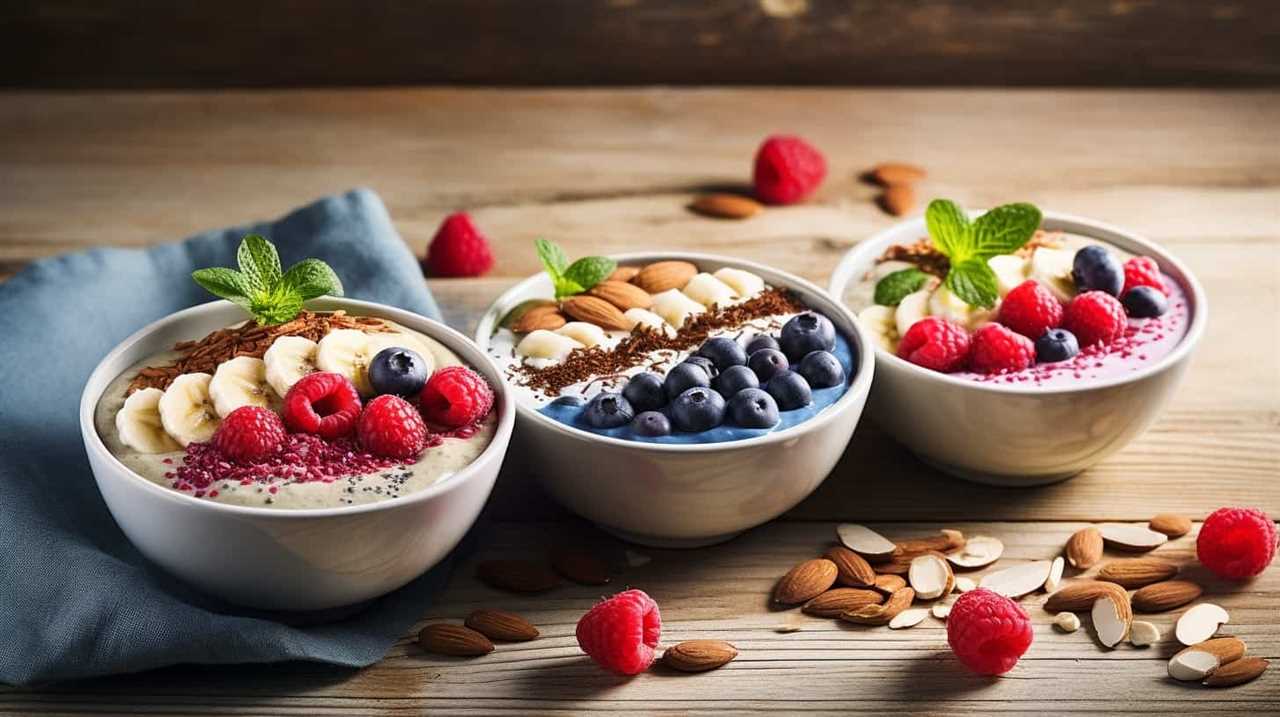
Packaging and Storage Considerations
When it comes to large-scale chia production, proper packaging and storage considerations play a crucial role in maintaining the quality and shelf life of the seeds.
One important aspect is implementing shelf life extension methods to ensure the product stays fresh for longer periods.
Additionally, moisture control methods must be employed to prevent the growth of mold and maintain optimal seed moisture levels.
Lastly, sustainable packaging solutions should be explored to reduce environmental impact and meet consumer demands for eco-friendly options.
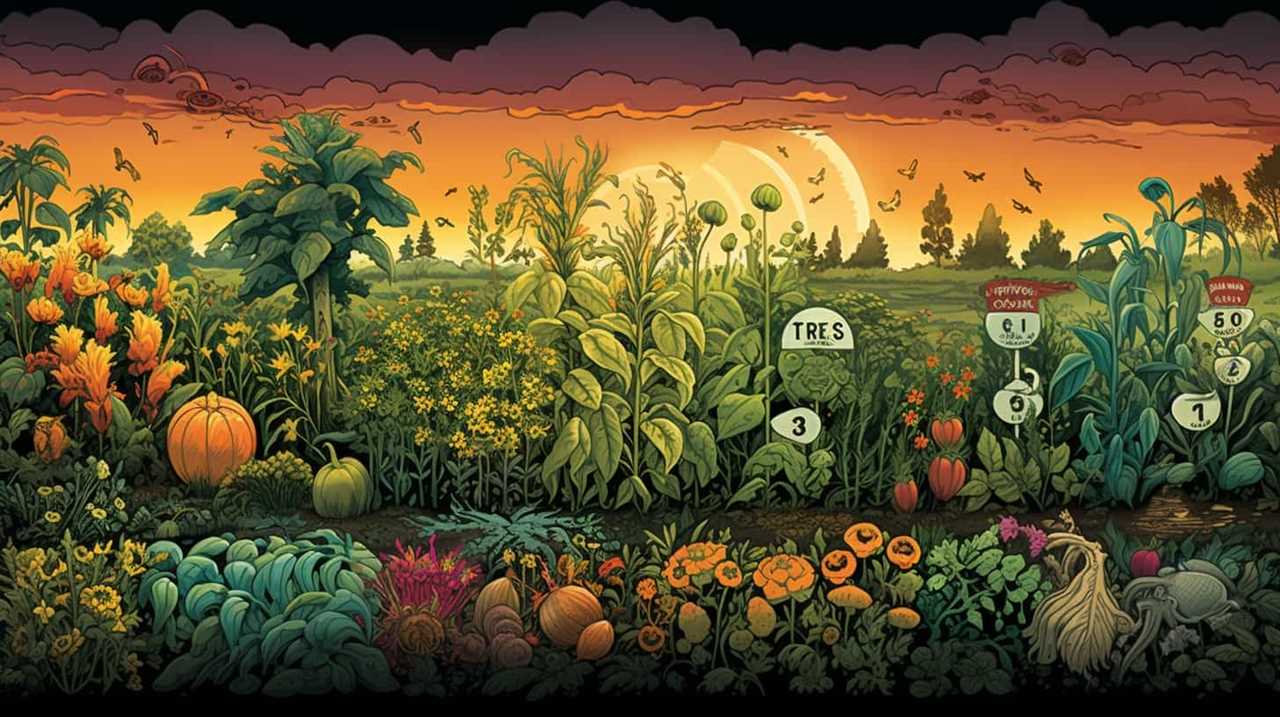
Shelf Life Extension
To maximize the shelf life of chia seeds, proper packaging and storage techniques are crucial. Here are some key considerations for shelf life extension:
- Vacuum-sealed packaging: This innovative technique removes air from the packaging to prevent oxidation and maintain freshness.
- Light-blocking containers: Shielding chia seeds from light can prevent the degradation of essential nutrients and extend their shelf life.
- Moisture-resistant packaging: Moisture is a primary factor in seed deterioration. Using packaging that repels moisture helps preserve the quality of chia seeds.
- Temperature-controlled storage: Storing chia seeds in a cool, dry environment ensures that they remain stable and don’t spoil.
- Regular quality inspections: Conducting periodic inspections of the packaging and seeds ensures that any issues are identified and addressed promptly, maintaining the integrity and longevity of the chia seeds.
By implementing these shelf life preservation techniques and packaging innovations, chia producers can confidently deliver high-quality products to consumers.
Now, let’s explore the next section on moisture control methods.
Moisture Control Methods
Now, let’s delve into the importance of moisture control methods in large-scale chia production, as they play a crucial role in preserving the quality and shelf life of the seeds. Moisture monitoring and proper drainage systems are essential to prevent the growth of mold and bacteria, which can significantly impact the quality of chia seeds. To effectively control moisture levels, it is important to implement packaging and storage considerations. One effective method is to use moisture-resistant packaging materials that can protect the seeds from external moisture. Additionally, investing in moisture monitoring devices can help in maintaining optimal moisture levels within the storage facility. By ensuring proper moisture control methods, producers can safeguard the quality of chia seeds and extend their shelf life.
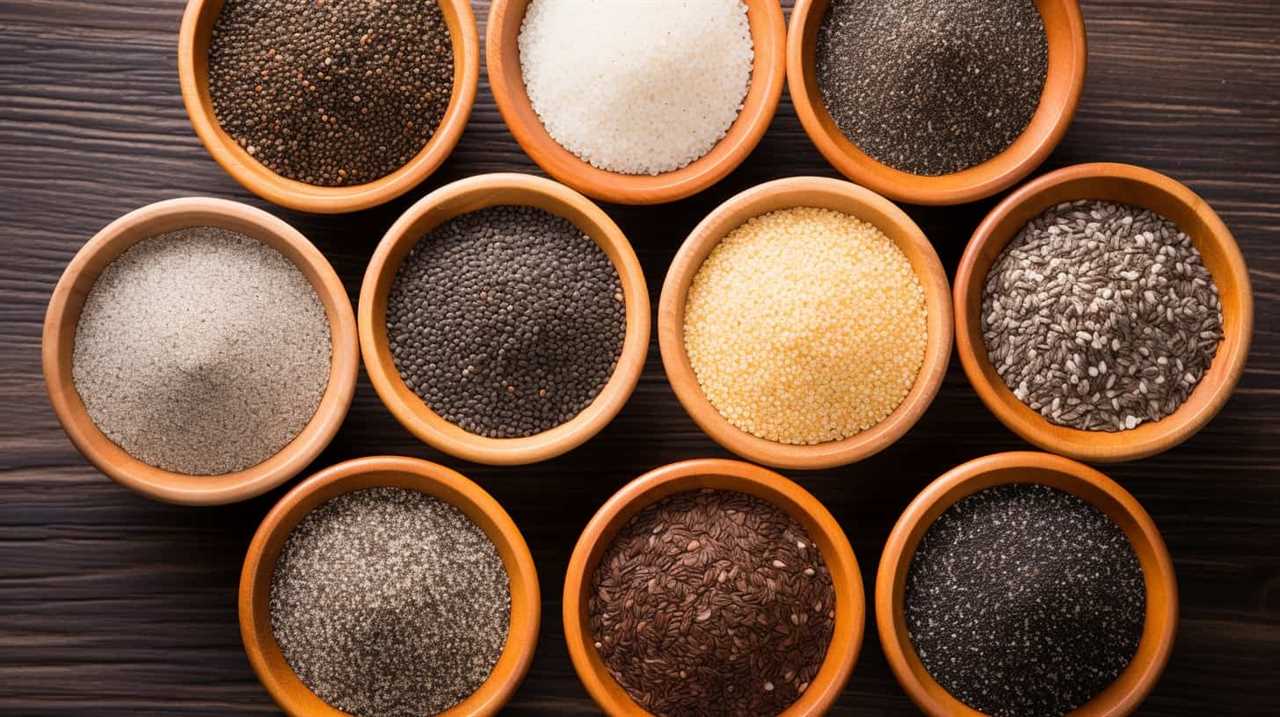
| Moisture Control Methods | Benefits |
|---|---|
| Moisture-resistant packaging materials | Protects seeds from external moisture |
| Proper drainage systems | Prevents mold and bacteria growth |
| Moisture monitoring devices | Maintains optimal moisture levels |
| Regular inspection and maintenance | Ensures effective moisture control |
| Training staff on proper storage procedures | Minimizes moisture-related issues |
As we have explored the significance of moisture control methods, it is now essential to consider sustainable packaging solutions that align with the principles of environmental consciousness and liberation.
[CONTINUE TO NEXT SUBTOPIC: Sustainable Packaging Solutions]Sustainable Packaging Solutions
Now let’s delve into sustainable packaging solutions, which continue the conversation from the previous subtopic of moisture control methods, to ensure the preservation of chia seed quality and extend their shelf life.
- Biodegradable materials: Opt for packaging materials that can naturally decompose over time, reducing waste and environmental impact.
- Eco-friendly alternatives: Explore packaging options made from renewable resources, such as plant-based or recycled materials, to minimize the use of non-renewable resources.
- Minimalist design: Simplify packaging design to reduce material usage and waste, while still providing adequate protection for the chia seeds.
- Reusable packaging: Consider using packaging that can be reused or repurposed by consumers, promoting sustainability and reducing single-use waste.
- Optimized storage: Develop packaging solutions that optimize storage space, allowing for efficient transportation and minimizing carbon emissions.
Quality Control Measures
Implementing robust quality control measures is crucial for ensuring the success and consistency of large-scale chia production.

Moisture testing is an essential component of quality assurance in the chia industry. By monitoring the moisture content of chia seeds, producers can ensure that the seeds meet the required standards for shelf life and germination. High moisture levels can lead to mold growth and spoilage, while low moisture levels can result in reduced viability and poor seed quality.
Conducting regular moisture testing throughout the production process allows for early detection of any issues and enables prompt corrective actions.
Additionally, quality assurance measures should include thorough inspections for foreign matter, such as dirt or debris, which can affect the overall quality of the chia seeds.
Implementing these quality control measures is vital for delivering a superior product and maintaining customer satisfaction in large-scale chia production.
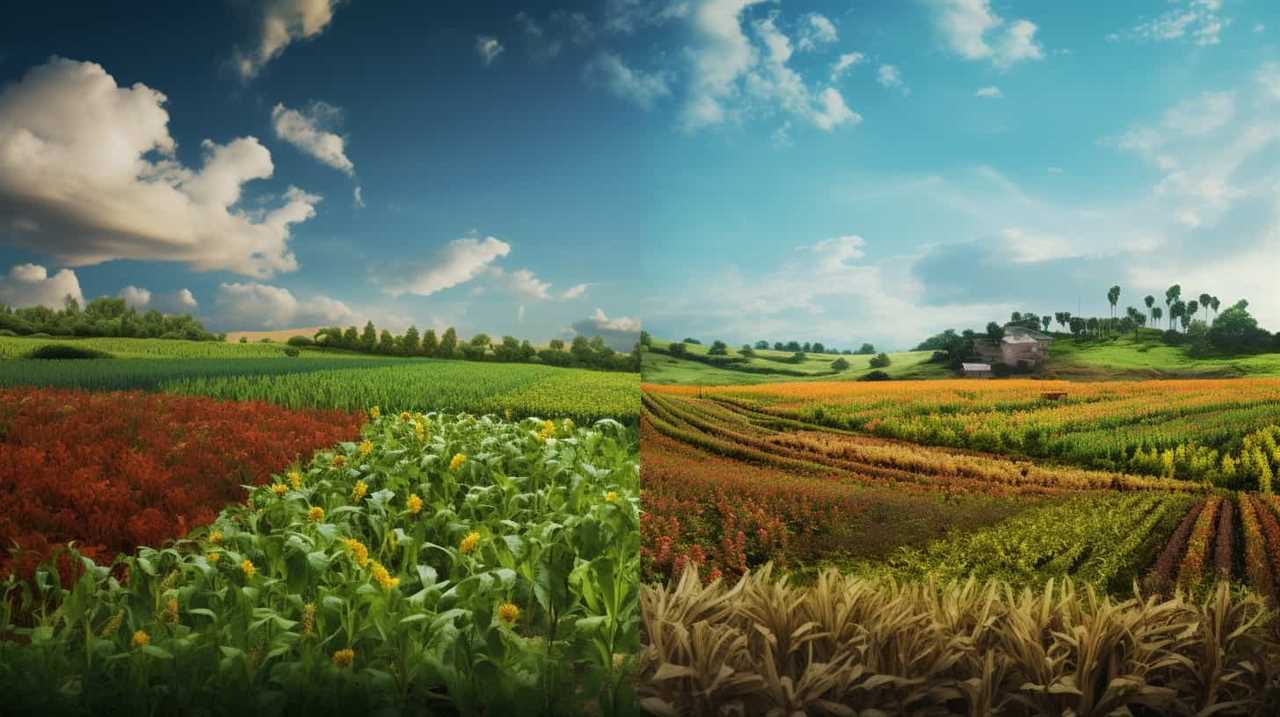
Marketing and Distribution Strategies
How can we effectively market and distribute chia seeds on a large scale?
When it comes to marketing strategies and distribution channels for chia seeds, it’s essential to consider the following:
- Digital Marketing: Utilizing social media platforms, online advertisements, and content marketing can effectively reach a wide audience and create brand awareness.
- Partnerships: Collaborating with health food stores, supermarkets, and online retailers can help expand the distribution network and increase product availability.
- Samples and Demos: Offering free samples and conducting product demonstrations at events and trade shows can generate interest and encourage potential customers to try chia seeds.
- Customer Reviews and Testimonials: Encouraging satisfied customers to leave positive reviews and testimonials on websites and social media platforms can build trust and credibility.
- Educational Content: Creating informative blog posts, videos, and infographics about the health benefits and culinary uses of chia seeds can educate and engage consumers.
Record Keeping and Documentation
In maintaining efficient large-scale chia production, meticulous record keeping and documentation are crucial.
Record keeping plays a vital role in ensuring smooth operations and maximizing productivity. It allows us to track and analyze important data regarding seed sourcing, planting dates, irrigation schedules, fertilization techniques, and pest control measures.
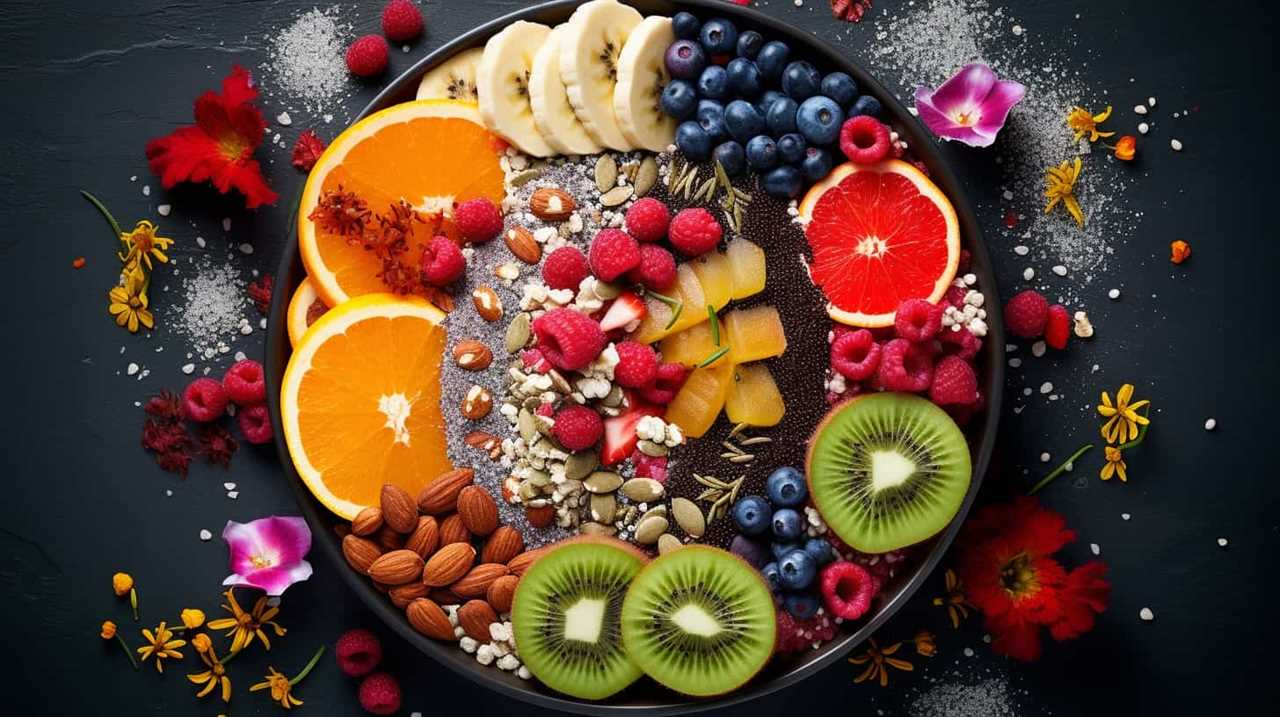
By maintaining detailed records, we can identify patterns, make informed decisions, and implement improvements to optimize our production processes.
Effective data management is essential for organizing and storing this information securely. Utilizing digital platforms and software can streamline record keeping, making it easier to generate reports and access data when needed.
Furthermore, proper documentation ensures compliance with regulations and certifications, providing transparency and accountability.
Conclusion
In conclusion, mastering the art of large-scale chia production requires a meticulous approach.
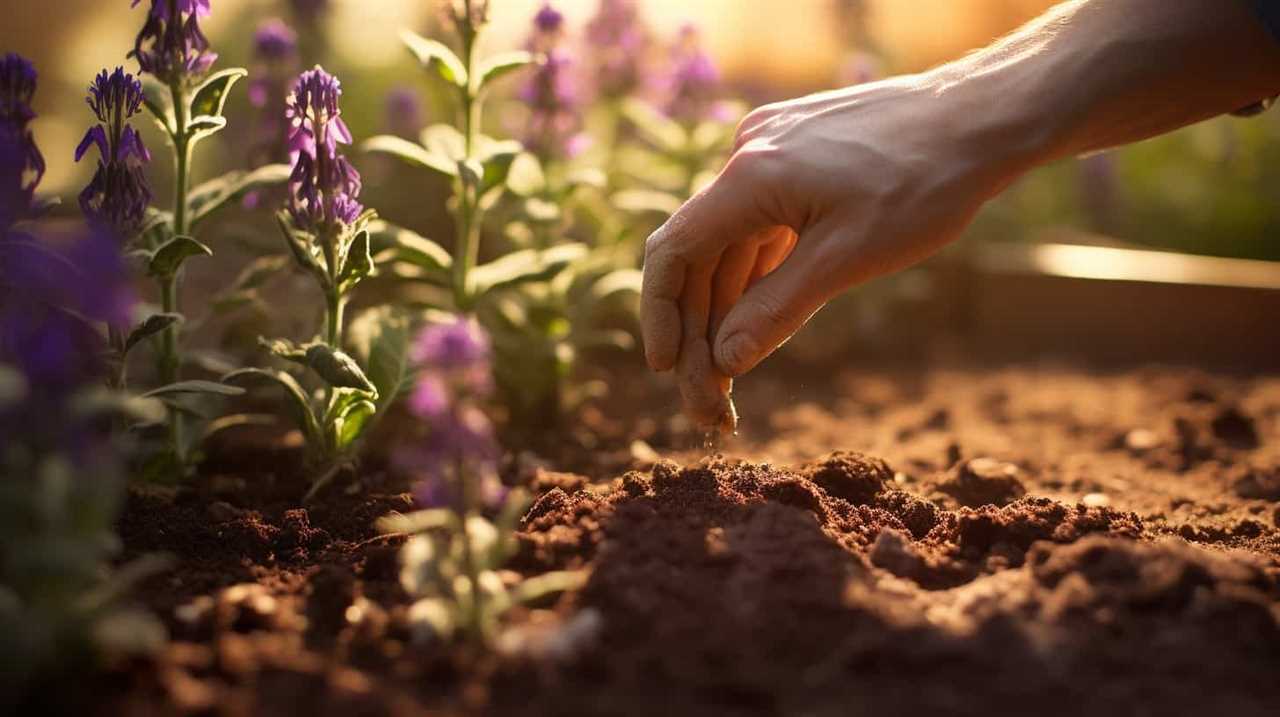
From preparing the soil and selecting the perfect seeds to implementing efficient irrigation systems and managing weed control, every step is crucial.
Proper packaging, storage, quality control, and record-keeping are essential for success.
And let’s not forget the importance of effective marketing and distribution strategies.
By following these expert tips, you’ll be on your way to achieving chia production greatness.
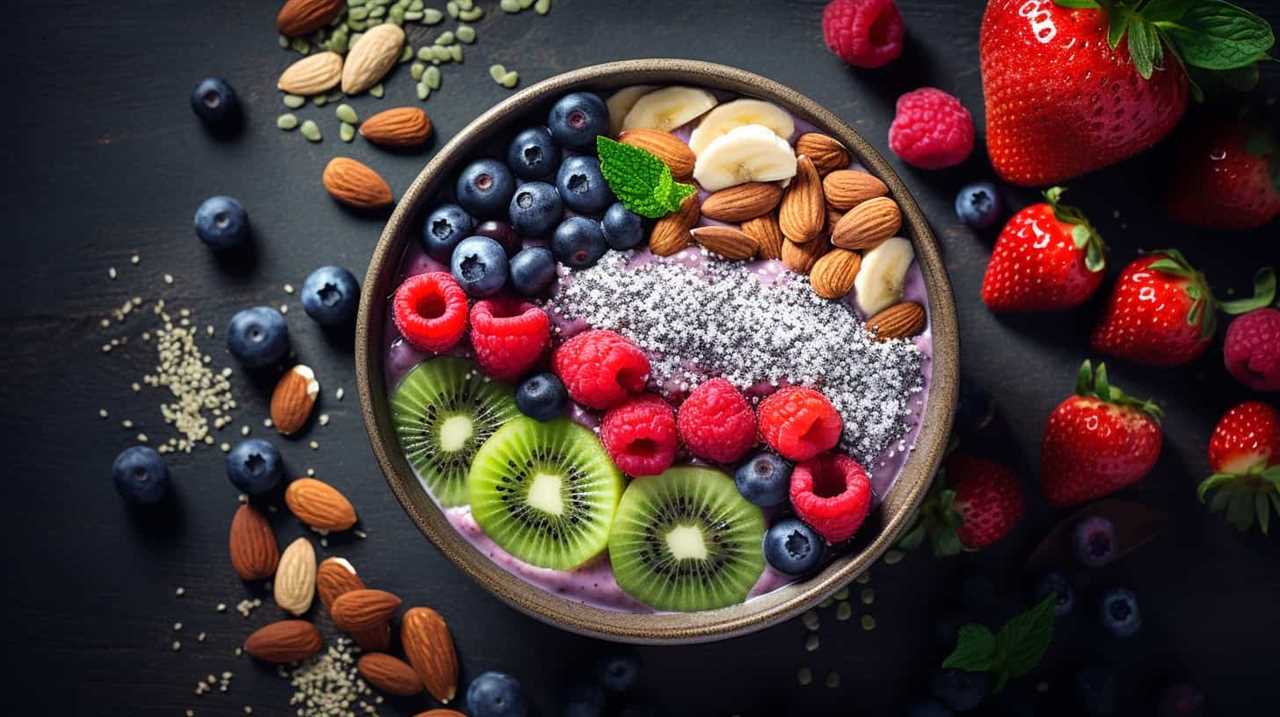
So, buckle up and get ready to revolutionize the chia industry!
